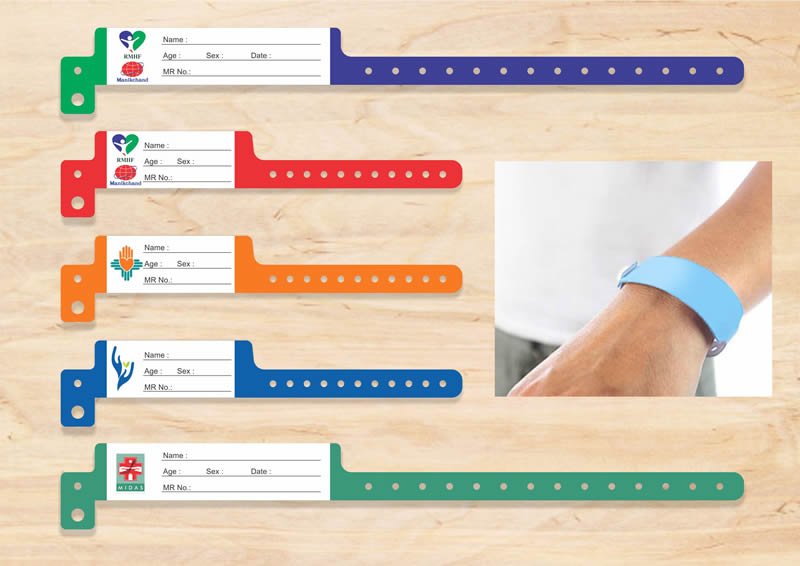The Role of a Patient Identification Band in Improving Hospital Patient Tracking Systems
The Role of a Patient Identification Band in Improving Hospital Patient Tracking Systems
Blog Article
Exploring the Various Kinds Of Patient Identification Band Used in Clinical Facilities
In the detailed globe of medical care, the important function of Patient Identification bands typically goes undetected. These bands, differing from basic paper wristbands to innovative RFID bands, create the backbone of Patient security protocols, ensuring precision in Patient Identification.
Comprehending the Importance of Patient Identification Bands
While they might seem like mere accessories, Patient Identification bands play a vital role in clinical centers. These bands serve as a critical tool for confirming Patient identification, stopping medical errors associated to misidentification. Patient Identification bands additionally aid in simplifying administrative jobs, ensuring accurate record-keeping and payment.
Typical Paper Wristbands: Their Use and Limitations
Typical paper wristbands have actually been a staple in Patient Identification throughout different medical facilities. While their use prevails, they harbor particular constraints that may impact their performance in Patient management. This area will focus on the extent of their application and the intrinsic disadvantages associated with their use.
Paper Wristbands: Use Extent
In the world of Patient Identification, paper wristbands have long held a crucial duty. These bands are usually utilized in outpatient setups, where the Patient's stay is short-lived. The wristbands consist of vital information such as the Patient's name, date of birth, and an unique Identification number. This straightforward, yet reliable system, enables medical specialists to promptly and properly recognize clients, guaranteeing the correct treatment is carried out. Paper wristbands are also made use of in emergency scenarios, where fast Identification is critical. Their usage extends to events like blood contribution drives and mass vaccination programs, better highlighting their adaptability. In spite of advancements in technology, the humble paper wristband remains a dependable and economical remedy for Patient Identification in different healthcare scenarios.
Limitations of Paper Wristbands
Despite their widespread usage, paper wristbands are not without their drawbacks. In addition, paper wristbands frequently lack the technical capacities of even more modern choices, such as barcoding or RFID chips, limiting their capability to simply presenting created information. Paper wristbands can create pain or skin irritation to some individuals, particularly when put on for prolonged periods.
Barcoded Wristbands: Innovations in Patient Identification
While Patient Identification has actually long been a vital element of medical care, the advent of barcoded wristbands represents a substantial jump onward. These bands utilize the simpleness of barcoding technology, allowing for Patient information to be swiftly checked and accessed. They enhance the speed and accuracy of Patient Identification, minimizing the threat of clinical errors related to misidentification.
Radio Regularity Identification (RFID) Bands: a Step Towards Futuristic Healthcare
The evolution of Patient Identification bands has actually produced the emergence of Superhigh frequency Identification (RFID) Bands (patient identification band). These ingenious gadgets present essential advantages for healthcare centers, using a much more effective and technically advanced ways of Patient Identification. The execution of RFID in medical care is a significant step home in the direction of a much more advanced strategy to Patient management and safety
Recognizing RFID Bands

RFID Bands: Secret Advantages
Mostly, these bands boost Patient safety by offering exact, instantaneous Identification, thus lowering clinical errors. RFID bands can store a huge quantity of Patient information, including medical history and allergies, allowing individualized treatment. Overall, RFID bands represent a considerable innovation in Patient Identification technology, benefiting both clients and health care carriers.
Implementing RFID in Healthcare
These bands give a seamless means to track and determine patients, guaranteeing their safety and boosting effectiveness in therapy procedures. RFID bands decrease clinical errors by giving accurate Patient Identification, which is vital in avoiding misdiagnosis or incorrect medication management. Thus, the application of RFID bands is a substantial step in the direction of improving Patient safety and security and healthcare shipment.

Color-Coded Wristbands: Assisting in Quick and Accurate Medical Diagnosis
In the dynamic environment of a clinical center, color-coded wristbands have actually emerged as essential tools for swift and accurate Identification of a client's clinical problem. These wristbands, worn by individuals, carry particular shades that match to different medical problems or standings. This system is designed to provide instant aesthetic cues to healthcare providers, enhancing Patient security and care top quality.
Strategies for Effective Application and Monitoring of Patient ID Bands
Attaining ideal use of Patient Identification bands demands a well-structured method for their implementation and see here now monitoring. Patient education is additionally important; patients have to comprehend the objective of the bands and the requirement for their constant wear. It's necessary to have a backup strategy in place, such as barcode scanning or biometrics, to make certain that Patient Identification is never ever jeopardized.
Verdict
Patient Identification bands are vital in clinical facilities to make certain safety and precision. Traditional paper, barcoded, RFID, and color-coded wristbands each hold special advantages, ranging from cost-effectiveness to innovative data storage space and instantaneous medical informs. Effective application and monitoring of these bands can substantially lower medical mistakes, enhance efficiency, and enhance total Patient care. Therefore, understanding and making use of these Identification tools is vital for keeping high requirements in health care.
These bands, varying from basic paper wristbands to innovative RFID bands, form the foundation of Patient safety and security protocols, guaranteeing precision in Patient Identification.The development of Patient Identification bands has brought concerning the introduction of Radio Regularity Identification (RFID) Bands. Generally, RFID bands represent a substantial innovation in Patient Identification innovation, profiting both people and health care providers.
RFID bands reduce medical errors by providing exact Patient Identification, which is vital in stopping misdiagnosis or incorrect medication administration. Patient education is additionally critical; people have to recognize the function of the bands and the requirement for their constant wear.
Report this page